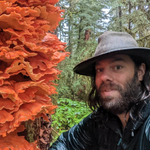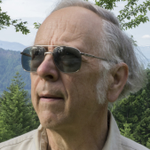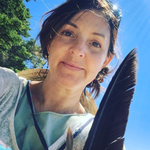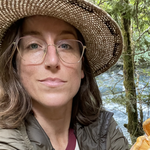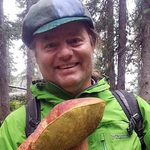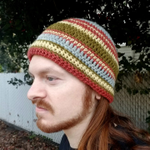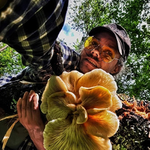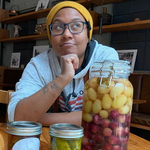
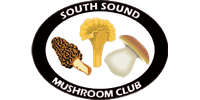
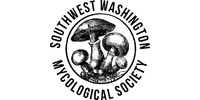
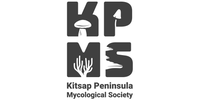
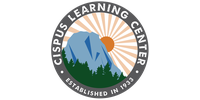
Speakers
Noah’s field mycology skills are extensive – he has spent over three decades seeking, photographing, identifying, and furthering his knowledge about all aspects of macrofungi. He has hunted for mushrooms throughout the United States and Canada, as well as on multiple expeditions to New Zealand and Australia and Cameroon. He is one of the premier mushroom photographers in the nation, having won numerous awards from the North American Mycological Association (NAMA) photography contest. His technique and attention to detail are unrivaled, arising from a philosophy of maximizing utility for identification purposes while maintaining a high degree of aesthetic appeal. His photographs have appeared on the covers and have been featured in articles of multiple issues of FUNGI Magazine, the primary mushroom enthusiast magazines in the United States, numerous mushroom books, as well as many club publications. He authored, along with Christian Schwarz, Mushrooms of the Redwood Coast, a Comprehensive Guide to the Fungi of Coastal Northern California and Mushrooms of Cascaida, a Comprehensive Guide to Fungi of the Pacific Northwest, as well as A field Guide to the Rare Fungi of California's National Forests. He is currently working on Mushrooms of Alaska, with Steve Trudell and Kate Mohatt. Noah travels and lectures extensively across America, following the mushrooms from coast to coast, and everywhere in between.
Christian Schwarz studied Ecology and Evolution at UC Santa Cruz but he is most well-known as a field mycologist. He has co-authored two field guides —”Mushrooms of the Redwood Coast” and “Mushrooms of Cascadia”(Backcountry Press), both with Noah Siegel. He primarily spends his time seeking, photographing, collecting, teaching about, and publishing research on North American macro fungi. He has served on the IUCN Red List Working Group and is a research associate of the Ken Norris Center for Natural History at UC Santa Cruz, where he teaches undergraduate courses in mycology and community science.
Regina Johnson is a restoration ecologist working throughout western Washington. Being an Ecologist means knowing a little bit about a lot of things, and how living things interact with each other and their environment. Turns out that fungi are a critical component of the biosphere, partnering with plants to provide nutrients, limiting plant populations through disease, and finally breaking down dead plants to create soil for the next generation of plants. Regina has been a member of SSMC and the local native plant society for just over a decade. At SSMC she is the Botanist, the Polypore Queen, and the Foray Coordinator.
After completing his Ph.D. in Chemistry at the University of Washington in 1971, Dr. Beug taught at Harvey Mudd College for 1 year and then taught chemistry, environmental studies, mycology, and organic farming at The Evergreen State College in Olympia, Washington for 32 years. He started mushrooming in 1968 and began photographing fungi in 1973; his photographs have appeared in well over 80 books and articles. In 1974 he joined the North American Mycological Association (NAMA) and the Pacific Northwest Key Council, a mycology service group dedicated to writing macroscopic keys for the identification of fungi. He served on the NAMA Education Committee, was chair of the Toxicology Committee, chair of the Editorial Committee, and past editor of the Journal McIlvainea. He won the 2006 NAMA Award for Contributions to Amateur Mycology. Most recently, he wrote Mushrooms of Cascadia: An Illustrated Key, Fungi Press 2021 (First Edition) and Ten Speed Press 2024 (Second Edition). He considers virtually everything he does as a part of his mission to make our world a better place through the appreciation of our natural world.
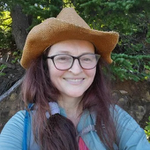
Shannon Adams
Presenter and Foray Leader
Shannon Adams, a Seattle-based amateur mycologist, combines her passion for fungi with her professional role as a User Experience Researcher in a tech company. Her fascination with fungi sparked over 20 years ago upon her relocation to the Pacific Northwest, where the region's diverse fungal species inspired her to start painting fungi. Presently, Shannon's interest has evolved towards fungal taxonomy, especially within the genus Cortinarius. She dedicates her time to observing, collecting, identifying, and describing new species within this genus. Her personal herbarium boasts over 700 collections, and she has successfully published descriptions of four new species. In addition to her mycological pursuits, Shannon has been actively teaching botanical illustration and fungal microscopy. She also serves as a moderator for several Pacific Northwest Mushroom Identification Groups and maintains a website dedicated to supporting the identification of Cortinarius species.
Susie Holmes is a founding member of the Cascade Mycological Society and biology faculty member at Lane Community College in Eugene, Oregon where she teaches mushroom biology and plant science courses. With interests in biodiversity and landscape ecology, she works with students in her classes to research phenology and fungal ecology and has co-founded a Fungal Diversity Project titled Macrofungi of Lane County. She has taught fungal microscopy courses for mycology clubs in the PNW and she co-organizes the annual Mount Pisgah Mushroom Festival in Eugene.
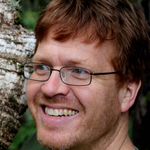
Danny Miller
Presenter and Foray Leader
Danny Miller is the Education Chair for the Puget Sound Mycological Society, helping to design and teach the curriculum for the club's mycology classes. He is also the club Librarian, ID Committee coordinator and an emergency poisoning point person for King County Washington Poison Control. He also belongs to the PNW Key Council, a group of amateur and professional mycologists, and is a co-author of MycoMatch (formerly MatchMaker) with Ian Gibson, the free PNW mushroom ID program for the PC. Danny’s interest in taxonomy is vast, and figuring out where all of the mushrooms fit into the fungal tree of life, while also working to collect the DNA of every PNW species to determine which still need names.
Rachel Zoller hails from the enchanting landscapes of the Pacific Northwest, where her childhood was steeped in outdoor adventures. It wasn’t until adulthood that she truly discovered the magic of mushrooms. A chance encounter with a chanterelle opened her eyes to the vibrant world that had thrived beneath her feet, unnoticed, for years. From that moment, she was captivated and her journey into the realm of mycology began. Having grappled with the complexities of mushroom identification and the dense language of mycology, she understands the challenges newcomers face. “Yellow Elanor” was born out of a desire to demystify this fascinating realm and provide a welcoming space for learners of all levels. Through her own experiences and interactions, she recognized the universal need for accessible resources and guidance, sparking her continued desire to educate.
Syrena Whitner was awarded the 2023 NAMA Memorial Fellowship, administered by the Mycological Society of America, in honor of Dr. Tom Volk.
Syrena Whitner is a fifth-year PhD candidate in the department of Marine Biology at the University of Hawaiʻi at Mānoa, where she is advised by Dr. Anthony Amend. She received her BS in Integrative Biology from Michigan State University in 2018, where her love of fungi and symbioses began while studying lichen ecology and secondary chemistry as an undergraduate research assistant in the MSU Herbarium. Following graduation, Syrena moved to San Diego where she joined the Gerwick lab at Scripps Institute of Oceanography as a research associate studying secondary metabolite production and biosynthetic gene clusters in marine cyanobacteria. Combining her love for fungi and the ocean, she pursued her PhD in the Amend lab where her thesis is centered on marine fungal ecology, specifically their role in the marine carbon cycle. Her current research utilizes metatranscriptomics and fluorescence microscopy to characterize fungal metabolic activity, associations with other microorganisms, community composition, and succession of both parasitic and saprotrophic fungi from pelagic ecosystems. In her free time, Syrena can be found surfing, hiking, traveling, or drinking coffee with her friends.
Daniel is the author of “Fruits of the Forest – Field Guide to Pacific Northwest Edible Mushrooms”, a product of a life time of mushroom hunting, the last twenty-five in the Pacific Northwest of North America. His other field guides are "Edible Mushrooms of the PNW" and "Edible Mushrooms of California" (both Harbour Publishing, 2011 and 2012), Amazon Mushrooms (2014, co-authored and a revised Spanish version, "Macrohongos de la Region Amazonica", 2023), "Field guide to Medicinal Mushrooms of North America with Robert Rogers (2018)", and MycoCards "Boletes of Western North America" co-authored with Gary Gilbert (2021).
Daniel grew up collecting and eating wild mushrooms in the Alps and has been foraging for over 25 years in the PNW and beyond, sharing his enthusiasm as a mushroom educator and guide and as past PSMS vice-president. In his presentations he is combining his stunning photography with an often funny blend of entertaining stories and scientific information; he likes to refer to as "edutainment". Having been in love with mushrooms since early childhood Daniel managed to bend his career as an ecologist and geographer focused on High Asia towards researching rural Tibet's enormous fungal economy. His Cordyceps research has been featured in The Economist, National Geographic, New York Times, Washington Post, NPR, BBC World Service etc. With his travel agency MushRoaming Daniel is organizing mushroom focused eco-adventures to Bhutan, Tibet, the Amazon, Colombia, the Austrian Alps and the Pacific Northwest since 2007 [www.mushroaming.com].
Sidnee Ober-Singleton grew up in the PNW, and always had an interest in fungi, but was fully sucked into mycology during an undergraduate research program on myco-remediation at Lane Community College. After continuing research and education at LCC, and getting a position studying fungus-growing ants at the University of Oregon he spent 7 years undertaking ongoing research and teaching. He has a special interest in fungal genetics and mating, Morel ecology, fluorescence microscopy, and applied biotechnology to the ends of cultivation, myco-remediation, cellulosics, and use for their diverse metabolites, including finding new uses for fungi that no one has thought of before.

Alan Rockefeller
Presenter and leading the evening UV Forays
Alan is a mycologist specializing in DNA barcoding, field photography and fungal microscopy. Committed to his cause, he has been studying fungal diversity for more than two decades and, since 2001, has photographed more than 2,500 species. In order to discover new taxa and spark interest in the hearts and minds of those new to the field, Alan regularly leads forays all over North America, including Mexico, where he has been studying the mushroom diversity for 15 years and is consequently bilingual. Alan’s contributions to community science have been prolific and has taught thousands of people how to extract and amplify the DNA of their mushroom finds. As of today, he has uploaded more than 700 of his own fungal DNA sequences to Genbank and is a co-author on several scientific papers, including publications documenting new species of bioluminescent Mycena and Psilocybe. Alan is also devoted to the art of macroscopic mushroom identification and spends hours each day identifying mushrooms for the general public; he has identified over 300,000 fungi on websites like iNaturalist, Mushroom Observer and in various Facebook groups.

Jon Sommer
Presenter and Foray Leader
Jon Sommer received a bachelor’s degree in botany from Humboldt State University and master’s degrees in botany and plant pathology from the University of California, Davis. He has studied mushroom identification with notable mycologists including Drs. David Largent, Orson Miller, Harry D. Thiers, and Daniel Stuntz. He has led mushroom forays and taught classes on mushroom identification across the United States for more than 40 years. A member of the Colorado Mycological Society since 1993, Jon currently serves as club president.
Heather Dawson is a truffle enthusiast who spends as much time as possible in the woods looking for fungi with her truffle dogs. She started hunting culinary truffles in 2019 with her first truffle dog Cricket, and has trained her second dog Rye as a truffle “diversity dog”, harnessing his talents for fungal surveys and research projects. Heather is currently studying truffles as a PhD student at the University of Oregon.
Truffle dogs are rising in popularity as a sustainable harvest method for the native culinary truffles of the Pacific Northwest, the Oregon white and black truffles. However, the high-powered scenting abilities of truffle dogs are rarely employed for exploring the diversity of the hundreds of truffle species that don’t have a place in the kitchen. The Pacific Northwest is a truffle biodiversity hotspot, and home to over 350 species of non-culinary truffles. This is an understudied group due to the challenges of finding fungi that fruit underground, and the truffle-curious must either hone their raking skills or train a dog to sniff out truffles. Rye the truffle dog is arguably the region's canine expert on truffle biodiversity, and has found truffles from over 40 fungal genera. Rye generalizes the truffle aroma across the entire scent spectrum from the delightful culinary truffles to the very stinky varieties that only a rodent mycophagist could love. A truffle foray with Rye involves following a dog around the beautiful Pacific Northwest forest, getting your hands dirty, and seeing (and smelling!) some of the more cryptic members of the world of macrofungi.

Aaron Hilliard
Foray Leader
Aaron Hilliard is an amateur mycologist and mycology educator from Port Orchard Washington. He is a father and active outdoorsman. His love for fungi started young when his grandma introduced him to wild mushroom foraging. After spending 20 years in the forest hunting for edible mushrooms and scouring the local libraries for mycological literature (before the internet), he went on to join the Kitsap Peninsula Mycological Society where he quickly got into service and became a trustee on the board. He went on to become the Vice President and program director and has held that position for the past 3 years.
Aaron attended Olympic College in Bremerton in 2001-2003 pursuing a degree in video production and integrated multimedia. In 2020 his passion for video making and mushroom foraging came together when he started a YouTube channel called Mushroom Wonderland. The channel has grown in popularity in the Pacific Northwest region and beyond, recently passing the 70,000-subscriber mark. He has had many well-known mycologists make cameo appearances and he releases weekly mushroom related videos. He has given various presentations for many clubs and at fungi festivals, led forays into the forest, and will be teaching a mycology course at Olympic College in the summer quarter. He remains current in the scene, with a deep interest in mushroom taxonomy, microscopy, foraging, and basically all things mushrooms.
Spike Mikulski
Spike is the Executive Chef at Pot au Feu Bistro in Providence, Rhode Island, where he gets to prepare and serve foraged ingredients you can't find on any other menu in New England. Spike is Rhode Island's first mushroom forager approved by the State to sell wild mushrooms commercially and he teaches the State’s certification program once a year for those also interested in foraging mushrooms for local restaurants and markets. During the rainy season, Spike enjoys studying the Amanitaceae, some of which make up his top ten edibles. Unfortunately for Rhode Island, there are no Amanita approved for sale, so you will not find them on the menu at Pot au Feu. He does, however, get to utilize his experience as an Amanita Expert and Northeast specialist for the “Poisons Help; Emergency Identification for Mushrooms & Plants” Facebook group as an identifier. In the off season, he has taken a fascination to learning food molds and plant pathogens commonly seen in the modern kitchen, observing occurrences like "sour-rot" on sweet potato caused by Geotrichum candidum (which is utilized in cheese making) or garlic bulbs being parasitized by Penicillium corymbiferum (known for its antibiotic properties). Spike has a few of his dishes featured on Instagram at @1wd2ef3rg4th5yj6uk7il He also has some educational Amanita Identification videos on his YouTube Channel.
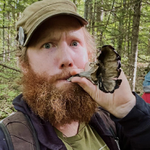
Pat Mitchell
UV Night Hike Leader
Pat Mitchell, President and Co-founder of the Blue Ridge Mycological Society, embarked on a transformative journey into mycology after attending the North American Mycological Association (NAMA) foray in Shenandoah in 2016. Inspired by the vibrant myco community he encountered, Pat channeled his passion for fungi into the creation of BRMS in 2018. Initially a casual club, BRMS underwent a significant evolution under Pat's leadership, culminating in its recent transformation into a fully organized and recognized nonprofit entity. With a focus on community building and fostering connections, Pat has played a pivotal role in shaping BRMS into a thriving hub for mycophiles in Central Virginia. His dedication to mycology and commitment to organizational growth have been instrumental in navigating the complexities of 501c3 filing, board formation and volunteer engagement. Pat's vision for BRMS extends beyond the present, as he dreams of passing down a thriving community to future generations of mycophiles.

Graham Steinruck
Culinary Demonstration Presenter
Graham Steinruck is a chef, forager, and aspiring mycologist. Graham has had the opportunity to work with some of Colorado’s top chefs, and his work features wild ingredients in unique preparations that are inspired by the natural world. He received the prestigious Zagat ‘30 under 30’ award for his dedication to cooking and foraging, and has contributed recipes to the ‘Fantastic Fungi Community Cookbook’ by Eugenia Bone, as well as the cookbook ‘Wild Mushrooms’ by Trent and Kristen Blizzard. He is one of Colorado state’s certified wild mushroom identification experts, licensed to identify over 60 species of wild and edible mushrooms for the food industry and he is the chef of the Telluride Mushroom Festival Fungi Dinner, where he features many different types of fungi in multi-course tasting menus. He recently founded a company called ‘Biodiversity Collective’, an event company that creates travel experiences that support biodiversity surveys and research projects. The organization’s first project, the Kaua’i Fungal Biodiversity Survey was just completed this past November.
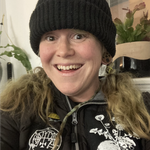
Tiffa Theden
Art Cave Lurker
Tiffa is a feral creature that lives in the Cascades in North Central Washington. She is enamored with the fungal kingdom and likes to make illustrations and linocuts of these beautiful little organisms in her free time. She volunteers with several different plant and fungi non-profits (WNPS, FUNDIS, NWL) mostly doing design work, and is on the NAMA visual arts subcommittee.
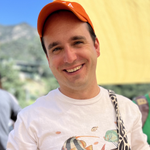
Aaron Tupac
Collector at Fungal Diversity Survey
Aaron Tupac (they/them) is a mycologist, educator, community organizer, and speaker based in Los Angeles. Aaron is the organizer of the fungi-focused community education group Exploring the Mycoverse. Aaron works for the Fungal Diversity Survey, the only nonprofit focused on North America's fungal biodiversity and conservation. They serve as a fungi collector for the California Fungal Diversity Survey, the first government-funded state-wide project of its kind.
Aaron is also the founding chair of the North American Mycological Association’s Conservation and Stewardship Committee. Aaron is passionate about fungi conservation advocacy, ecological restoration, and making fungi education accessible for all ages and demographics. As a lover of the more-than-human world, they are fascinated with fungi and their essential role in the interconnection of all living beings.
Dr. Gordon Walker is originally from Cambridge, MA but also spent time growing up on the Northshore of Massachusetts. He attended UC Santa Cruz, obtaining a B.S. in Biochemistry. He then attended UC Davis, where he completed his Ph.D. in Biochemistry and Molecular Biology. He then worked for Opus One winery, isolating wild yeasts and pioneering new wine technologies. He spent time working in biotechnology around the Bay Area, then returned to UC Davis where he completed post-doctoral work on fermentation process control. Besides his passion for all things fungi and fermentation, he is an avid chef, forager, sailor, SCUBA diver and gardener. He resides in Napa, CA.
Born and raised in Tacoma, Chef Mahogany Williams is a true Pacific Northwesterner. She completed training at the Seattle Academy of Culinary Arts in 2017 and went on to work closely with James Beard Award-winner Tamara Murphy at her principal Capitol Hill establishment, Terra Plata. This experience ignited her passion for farm-to-table northwest cuisine.
Additionally, Mahogany has also spent significant periods of her life living and working in the food capitals of the world. In New Orleans, she immersed herself in various Creole and international cooking practices and held positions in iconic kitchens including Gabrielle, Bywater American Bistro, and Saba. She learned time-honored preparation methods from local artisans in the backcountry of France, Spain, and Italy. The vibrant people, traditions, and ingredients she encountered left a lasting impression on her approach to cooking and her overall outlook on life.
Today, Chef Mahogany aims to blend the flavors of her travels with the homestyle cooking she grew up eating. Inspired by the soul food classics her mother and grandmother served, her philosophy centers on offering fresh, hand-crafted bites that reflect the changing tastes of her community.

Andy Wilson
Voucher Committee Chair
Dr. Andrew Wilson - Assistant Curator of Mycology in the Sam Mitchel Herbarium of Fungi at Denver Botanic Gardens. For Dr. Wilson the discovery of mycology began back in the late 90’s at San Francisco State University in taking classes from world renown mushroom taxonomist, Dr. Dennis Desjardin. Working with Dennis, Andrew earned a Masters degree studying the mushroom genus Gymnopus from Java and Bali. He later went on to earn a PhD in the lab of Dr. David Hibbett at Clark University. His project took him back to Southeast Asia, this time to study the ecology and evolution enigmatic puffball genus Calostoma and their relatives. In 2009, Andrew graduated and began a postdoc with Dr. Gregory Mueller at the Chicago Botanic Garden where he explored the systematic evolution of the Cantharellales and the model ectomycorrhizal mushroom genus Laccaria. He also did a one-year postdoc at Purdue University, in the lab of Dr. Cathie Aime, teasing apart the complex evolution of plant pathogenic rust fungi. At Denver Botanic Gardens, Dr. Wilson is working on a regional contribution to the Fungal Diversity Survey (FunDiS) that encompasses the state of Colorado, with a focus on the Southern Rockies. In this effort he is training students on how to study biodiversity using natural history collection and DNA sequence analysis. He is also working on new tools in DNA sequencing to better sample and study fungal diversity.
